Packaging and Label

OPP PACKAGES (PRINTED / NON-PRINTED)
Oriente stands for Poly Propylene. OPP is the material that results from the change in functional properties of the plastic as a result of stretching the raw material of polypropylene (PP) from one place during its production. It is a thermoplastic polymer with a very wide usage area. Polypropylene obtained by polymerizing monomerpropylene is extremely resistant to chemical solvents (acids and bases). Two main processes are used in the production of OPP films. These are structure and bubble processes. The extruded polymer in both processes is mechanically stretched, which allows the polymer molecules to come together, machined in the machine direction (MD) and perpendicular to that direction (TD). As a result of these processes, there are significant improvements in the transparency, strength, moisture resistance and low temperature resistance properties of polypropylene. Improving the toughness properties allows the processed films to be thinner. Often used in combination with other films (eg LDPE) for heat sealing. By coating with PVDC (polyvinylidene chloride) or metallized film, its barrier properties can be improved.
Features: It is brighter and more transparent than plastic bags, has high tensile strength during use, They have high optical and mechanical properties, They also have protective properties against chemicals. It can withstand high temperatures but can wrinkle if used roughly. OPP has a low surface holding power. They are the most harmless plastic material in terms of health and they are hygienic since they do not hold dust.
Usage areas : When it comes to plastic packaging, the food industry mainly uses OPP bags or films. High Transparent adhesive tapes are also made using the same formulation. Bags that can be used in product packaging, textile industry, packaging of disposable products in hotels and food packaging are made of OPP. OPP banded bags can be produced in any thickness, laminated and unlaminated, with OPP, PET, PL band, printed or unprinted. These are difficult to tear, and OPP bags are suitable for leather goods, clothing etc. used in packaging.
CPP PACKAGES (PRINTED / NON-PRINTED)
CPP "Cast PP"; It is the one produced without any stretching during the production of polypropylene (PP). These films are produced without any stretching and have good thermal adhesion properties. CPP films are products with excellent mechanical strength, optical properties, high puncture and tear resistance. They are transparent, brighter and high-strength films compared to polyethylene films. CPP (Castpolipropilen) films are generally produced as three or five layer structures.
Features : It has very good thermal adhesion properties. Their brightness and mechanical strength are high. It has a high melting temperature. It has high puncture and impact resistance. It has a high water vapor barrier feature compared to PE films.
Usage areas : Application areas are bag films and edge welded bags, food wrapping films, textile bags, confectionery packaging. It is also used in packaging of bread and other bakery products, pasta, pulses and other dry food packaging, textile product packaging, medical product packaging, pet food packaging.
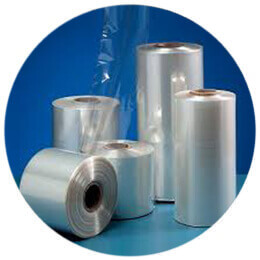

BOPP PACKAGES (PRINTED / NON-PRINTED)
BOPP is a cross and longitudinal bidirectional stretched film. During the production of Polypropylene (PP), it is called Bioriente PoliPropilen (BOPP). The three most common techniques for making BOPP are the tension frame sequential technique, the simultaneous tension frame direction technique, and the double bubble propulsion technique. In general, the production technique feeds the raw material into the system (extrusion), and the film layers are drawn into the molds evenly in sheet form. Then, longitudinal stretching and stretching process suitable for the process is performed with the help of transverse clips. The film thickness is measured and the surface of the film is smoothed to hold ink.
Features : It shares the properties of other PP plastics, including strength, fatigue resistance, moisture resistance, very low toxicity, flexibility and controllable transparency. Manufacturers can make BOPP clear, opaque, or any transparency in between. It is preferred as a packaging material with its high strength and high quality optical properties. Also, although they are easily printable, most ready-to-use adhesives have a difficult time adhering to the material. These properties make it suitable for use for long-lasting, food safety labels.
Usage areas : Common usage areas; Packaging and food packaging labels, food containers, plastic strings, medical grade plastics, laboratory products, textile industry, cigarette, adhesive tape, paper cardboard lamination, cassette and flower are used as packaging materials in many areas.
A- SEDEF PEARLIZED BOPP PACKAGING ( PRINTED / NON-PRINTED ) They are heat sealable, non-stick cavitated, high efficiency films. There are also low heat sealable versions for rapid packaging machines.
B- METALLIZED BOPP PACKAGING ( PRINTED / NON-PRINTED ) Metallized coex or high efficiency cavitated films suitable for high barrier, heat sealable, low heat sealable or cold glue applications for food packaging.
WAXED PAPER PACKAGING ( PRINTED / NON-PRINTED )
Waxed or paraffin coated papers are called "Waxed paper" or "Wax-sized paper" in English and "Waxed paper" or "Paraffin paper" in Turkish. Waxed Paper is a treated paper and is used as a wrapping paper. In its simplest definition, it is obtained by coating the paper produced by any method with hot paraffin solution or by impregnating it until it becomes saturated. Paper with waxing; It gains resistance to water, oil and water vapor.
Usage areas : In daily sales, as wrapping paper by businesses such as grocery stores, butchers, delicatessen, pharmacies; Packaging materials in the form of bags, packages, boxes for nutrients such as butter, biscuits, cakes, cookies, in frozen foods, milk, ice cream, candy boxes; It has a wide variety of uses such as inner wrapping paper in candy and chewing gum. In addition, it draws attention with its cheap and easy production. Many businesses are working with simple and old machines.

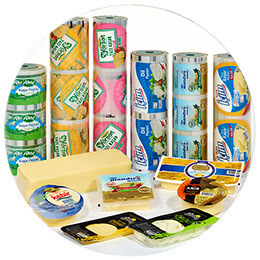
TWIST PET PACKAGING ( PRINTED / NON-PRINTED )
Twisted packaging is one of the most traditional confectionery packaging methods. It is also called candy packaging, pillow packaging and folding packaging. Twist Pet Packaging; It is an environmentally friendly packaging that is not harmful to human health. PET products have sufficient strength and hardness so they can produce products of different thickness. Laminated with Aluminum Foil and PE; It protects various powder mixtures from external factors. Twist Pet Packaging; It provides moisture and gas barrier, it is clear and transparent, has transparent and metallized varieties, is resistant to high temperature, extends the shelf life of the product and preserves its freshness, has good bending property, is suitable for lamination process PET Twist film is one of the most preferred films thanks to its easy-to-shape structure. The printing and color vibrancy in the packaging offers a high level of visual presentation.
Usage areas : It is used in all kinds of candy and chocolate packaging. In addition, it is used to protect powder mixtures such as coffee and spices from external factors by laminating with aluminum foil and PE.
BARRIER PACKAGING ( PRINTED / NON-PRINTED )
Foodstuffs are extremely sensitive to factors such as moisture, oxygen, light and odor. For these reasons, it is very important to choose the right materials for the packaging of food and to know their gas and moisture permeability properties. Some packaging materials are more resistant to moisture, others to oxygen. By combining two different materials or lamination processes, films resistant to moisture and oxygen can be produced. Some packaging materials; Barrier properties can be added by coating with materials with high resistance to oxygen and moisture permeability. Barrier films, moisture, oxygen, carbon dioxide, fragrance, light, etc. for sensitive products. It includes very special materials and laminations with improved protective properties.
Usage areas : Firms that want a long shelf life or produce products for export must use Barrier Packaging in their applications, and the barrier feature varies according to the product. It is especially preferred in the packaging of frozen food, ready meals, take away, dried fruits, dried fruits, processed fruits and vegetables.


LAMINATED PACKAGING (PRINTED / NON-PRINTED)
Laminated Paper Packages; These are films produced by bonding or coating materials in raw material form with different properties to each other and forming layers. Laminating a product is an easy way to give that product the feature we want. Lamination process can be applied to laminated packaging papers, aluminum foil and plastic packaging materials. Laminated Plastic Packaging is the combination of plastic films of different characteristics with the help of heat, pressure and glue by applying various printing and bonding and making them into a single layer. Special adhesive materials and coating techniques in accordance with the standards for food safety should be used in lamination processes.
Usage areas : Laminated Packages; They are used in the food industry, industrial packaging bags, packaging or bags that require heat and insulation, and products that will be affected by odor and humidity.
SHRINK FILMS
Shrink Films ensure the safe packaging and shipment of our products by thermal shrinkage. Shrink Film; It is produced by using single layer, multi layer low density polyethylene raw material in machines. When Shrink Films come into contact with heat, it shrinks and shrinks and takes the shape of the product it wraps. Shrink Film is odorless, tasteless and resistant to impacts. It protects the products from adverse environmental conditions. It is the ideal packaging material for long distance transportation. It can be used for all kinds of products produced in the industrial field. It keeps the products coming out of the production line more compact and protects against physical impacts in all stages until they reach the end user. Scratches, dirt, etc. on the products. It helps to create the most dynamic protection against situations.
Usage areas : It is especially common in the use of industrial products such as soft drinks, glass, ceramics and metal. Shrink Films are successfully applied in water, beverage, automotive, food, forestry products, cleaning materials and many other sectors.
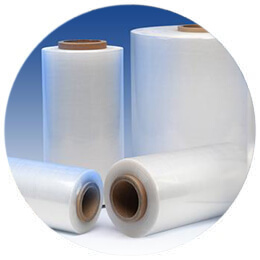

STRETCH FILMS
Stretch Film, stretch or stretch wrap is a transparent packaging material or plastic product used in wrapping various substances to eliminate the interaction with air. Thanks to its elastic feature, it holds the items it is wrapped tightly. On the other hand, it shrinks and loosens when heat is applied. Stretch Film holds the products together and prevents them from dust. It protects from moisture and getting wet. It is an important element in packaging. Stretch Films are easy to apply due to their flexible structure and take the shape of the product it is applied to. Because they are transparent, they allow the packaged product to be seen from the outside. Stretch Films do not leave any unwanted odor on the product they are applied since they are odorless.
Usage areas : It has two types as industrial and food stretch. Industrial stretch is often used for packing freight, but is also used to pack small items. Food stretch; It is used to prevent food from dusting, wetting and spoiling by being affected by external weather conditions. Food stretch; It is used to keep food together, to preserve freshness, to remain hygienic, to prevent the smell of food from mixing, and to prevent liquid foods from spilling.
OPENING BELTS
Trench Tapes are available on most packaging of packaged products. This tape is made of thin film and is manufactured with adhesive. You can see it on many product packages. Opening Tapes are designed to tear the gelatin of a packaged product.
Usage areas : Food industry, tobacco industry, pharmaceutical industry, packaging industry, etc. Opening Tapes that you can see on the products produced by most of the sectors; It is usually in red and can be produced in other colors if desired. Intensive usage areas are Biscuit, Cigarette and 5-gum packages.


THERMAL TRANSFER RIBBONS
Thermal Transfer Ribbons They are strip films in rolls. It is used in thermal transfer printing method. It consists of three layers. There is a film layer in the middle, heat liquefied ink on one side, and a protective layer on the other side that protects the printhead. Ribbon provides the required information to be transferred from the barcode printer to the label with the help of a computer program. Printing occurs when the solid ink on the film becomes liquid as a result of the heating of the thermal print head and is transferred to the label surface. The life of the printing made with Thermal Transfer Ribbons is longer.
Usage areas: Barcode printers, automatic identification systems, labeling machines, ticket systems (train and airline tickets etc.), printing on plastic cards (Driving License etc.), packaging film The prints made on (PE, PP, OPP etc.) are some of the areas where graphic arts are used. In the food sector, it is used in salted / spicy packaged nuts and snacks, meat product packages, wrapped confectionery product packages, chewing gum product packages, chocolate / wafer packages, fresh and frozen food packages, and dried fruit packages. In addition, cosmetics, glossy packaging, pharmaceutical medical devices, automotive, fresh soups are other areas of use.
CODING STRIPS
Coding Strips print on the packaging by using temperature and pressure and with the help of letters and numbers arranged on existing cliches in hot press coding machines.
Usage areas: Almost all packaging types used in the food and chemical industry and printing on coated / uncoated synthetic paper (label types), nylon, cellophane, leather and hard plastic and coding can be done. Printing and coding can also be done on package packages, laminated and uncoated labels and cartons.
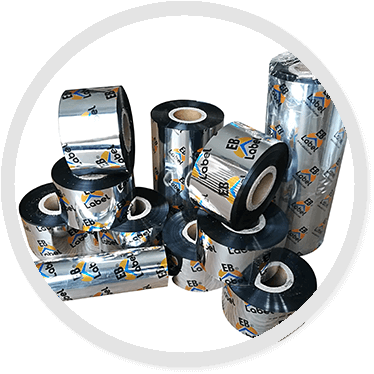
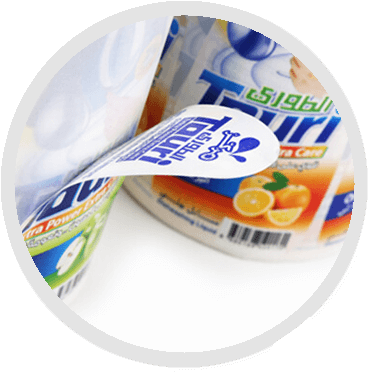
LABELS
- 1) Beverage industry labels
- 2) Food industry labels
- 3) Cosmetic industry labels
- 4) Household chemicals industry labels
- 5) Automotive industry labels
- 6) Pharmaceutical industry labels
